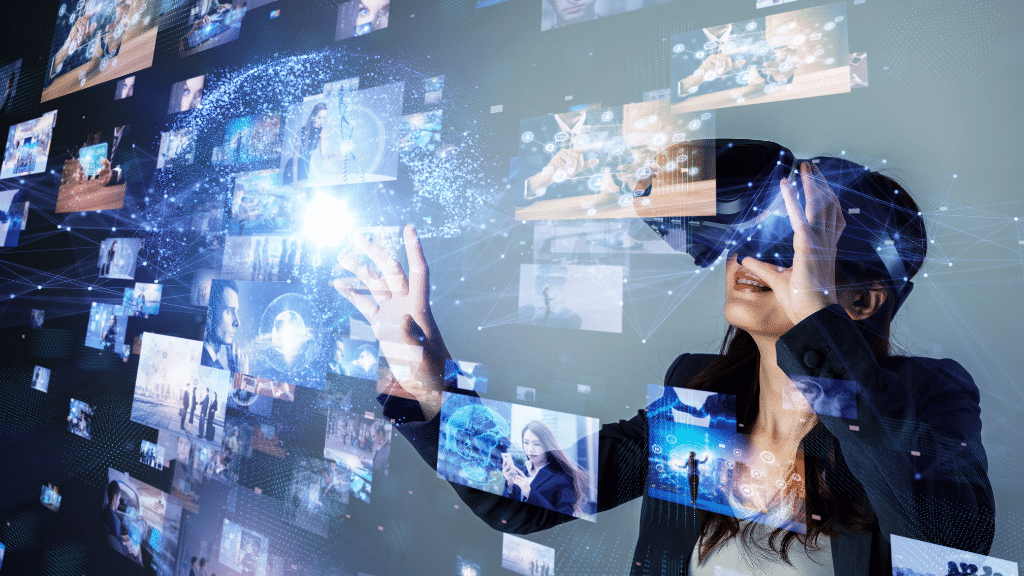Research suggests people alter behaviours based on assumptions about the appearance of their avatars, so what does this mean for avatar design in enterprise VR / the metaverse?
Avatar comfort and preference
Over the last month, Snobal has been discussing the topic of avatars frequently with our enterprise customers. How avatars should look (photorealistic or animated)? Should they be full-body, or is half-body sufficient?
User avatar comfort and preference is one key area of interest that’s important to keep in mind when talking about VR.
In short: is the user comfortable with the avatar that represents them?
In VR, an avatar is something a user selects before entering a virtual environment or experience and where the user experiences the environment from the avatar’s point of view.
At Snobal currently, we have deliberately not offered users the ability to select photorealistic avatars. We have done this in a bid to prevent any ‘uncanny valley’ experience. Instead, users can select animated avatars like this:
![]()
But what is the uncanny valley? The uncanny valley is a concept first introduced in the 1970s by a professor at the Tokyo Institute of Technology, Masahiro Mori, who coined the term to describe the observation that robots that appear humanlike are more appealing but only up to a certain point. At a certain pt, they start to feel…creepy.
While the original article was written with robots and prosthetics largely in mind, the same concept also applies in VR – if you seek to make avatars too photorealistic, you risk having users getting distracted by the avatar or perhaps feeling unease at other user's avatars and not achieving what they need to in VR environment whether its effective employee onboarding, product demos, workplace training etc.
Our favourite observation, though, by Mori echos with lessons for any VR designer or enterprise requesting photorealistic avatars for their virtual environment:
Thus, because of the risk inherent in trying to increase their [robots]degree of human likeness to scale the second peak, I recommend that designers instead take the first peak as their goal, which results in a moderate degree of human likeness and a considerable sense of affinity. In fact, I predict it is possible to create a safe level of affinity by deliberately pursuing a nonhuman design. I ask designers to ponder this. To illustrate the principle, consider eyeglasses. Eyeglasses do not resemble real eyeballs, but one could say that their design has created a charming pair of new eyes. So we should follow the same principle in designing prosthetic hands. In doing so, instead of pitiful-looking realistic hands, stylish ones would likely become fashionable.
– What Is the Uncanny Valley? Creepy robots and the strange phenomenon of the uncanny valley: definition, history, examples, and how to avoid it, 2019
For those interested, you can read the original essay (translated) by Masahiro Mori here.
Impact of Avatars on behaviour
This goes to a related issue – avatars affecting behaviour in VR.
Research suggests that people alter their cognitions and behaviours based on assumptions about the appearance of their avatars. (Sherrick et al, 2014).
For example, research has shown that taller avatars behave more confidently in a negotiation task than participants assigned shorter avatars. (Yee & Bailenson, 2007).
(Hint: perhaps consider avatars are all the same height in an enterprise VR experience?)
And other research found that the “more anthropomorphic (lack of androgyny) avatars were perceived to be “more attractive and credible and people were more likely to choose to be represented by them”, (Nowak & Rauh, 2005).
All of this falls under what you might call the Proteus Effect – the effect an avatar has on the user and others around them.
Both the Uncanny Valley and Proteus Effect are a fascinating exploration into the psychology of avatars, and it's an area we are going to see an explosion of research, learnings and insights over the coming years. It will also be interesting to see how VR/AR software companies iterate and make improvements as we learn more about how avatar comfort and preference influence user engagement and comfort in the VR environment.
.png?width=190&name=IPA%20Logo%20Transparent%20(Hi-Res).png)





